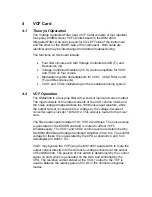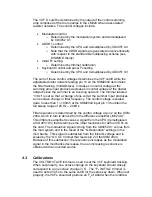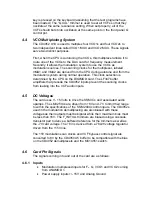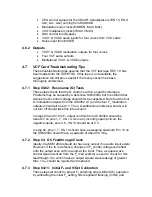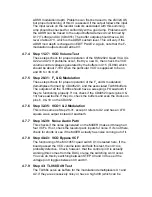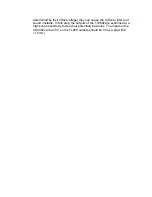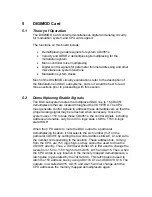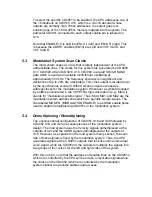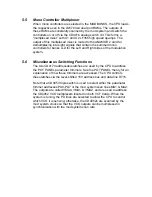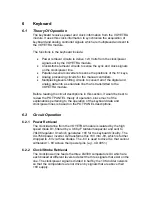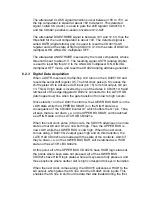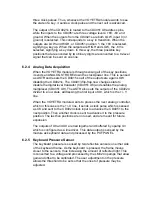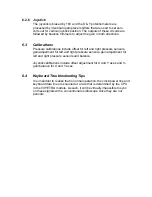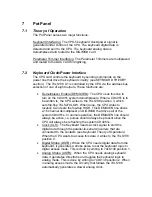
suggestions will still prove useful if the theory section has been
thoroughly understood.
3.6.1 Step 50-71: Waveform Tests
These steps check that all of the VCO waveforms are present and are of
proper amplitude and frequency. Since the instrument has been
AUTOTUNEd and the middle A key is down, the outputs should all be
pretty close to A440. The setting of the MASTER TUNE control, the
pitchbend joystick and pitchbend pedal will all affect this.
Problems with the waveforms can be traced to the CD4053 for the saw
and triangle, the CD4520 for the suboctave and the pulse width control
voltage coming from the CD4052 for the pulse wave.
3.6.2 Step 72-73: Sync Check
The sync function is checked here. The distinct “sync” waveform should
be apparent as VCO1 is locked onto VCO2’s frequency. Problems may
be caused by the CD4053 switch and the CEM3340.
3.6.3 Step 74-75: Linear FM Check
Linear FM is when the output of the VCO2 mixer is routed to the linear
control current input on VCO1. Problems can be caused by the CD4053
switch or if the output of VCO2 is defective.
3.6.4 Step 76-79: Modulation Test
VCO1 and 2 modulation comes from the VCF card (see VCF technical
description) and is fed into the VCOs via summing resistors on the CEM
3340s. The problem of no modulation can be caused by improper
resistor values or shorts on the modulation lines.
Defective demodulation buffers on the VCF card can cause jittery
oscillators if the VCF has not been checked for proper operation for the
modulation demultiplexers. If jittery oscillators are found, try switching
VCF cards to see if the problem follows the VCF. If so, chances are it’s in
the Modulation system and not on the VCO card.
3.7
Typical Problems And Solutions
3.7.1 Letter
“A”
appears
This means the VCO can’t be sensed at the DAC. Check if the VCO has
a sawtooth at PIN 9. If so, trace it to the waveform mixer output that

















